By Deba Uwadiae
President Joe Biden led Ohio Governor Mike DeWine, Lt. Governor Jon Husted, Intel CEO Pat Gelsinger in Licking County, Ohio, and other officials in the breaking ground of Intel’s newest U.S. manufacturing site in 40 years in Columbus, Ohio.
In January, Intel announced an investment of more than $20 billion in the new semiconductor manufacturing site to produce leading-edge chips.
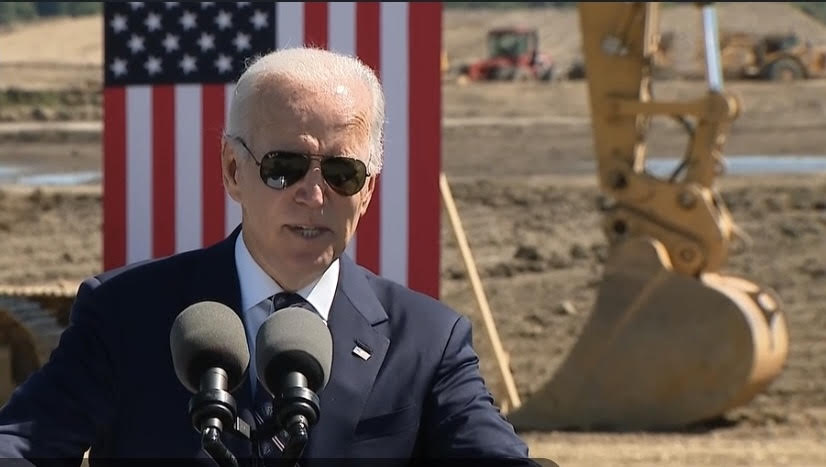
President Biden will deliver remarks on rebuilding American manufacturing through the CHIPS and Science Act and the Bipartisan Infrastructure Law. Ohio Gov. Mike DeWine and other federal, state and local officials will also take part in the event.
President Joe Biden’s speech at the historical event is run below:
Thank you, Pat, (Intel CEO Pat Gelsinger) for that introduction. And pretty amazing — pretty amazing. It was just back in January when we were together at the White House with Senator Brown and Senator Portman announcing this historic investment.
In March, I shared the story in my State of the Union Address — the story of the field of dreams in the middle of Ohio where America’s future will be built.
In August, we were back at the White House as I signed the CHIPS and Science Act, one of the most significant science and technology investments in our history.
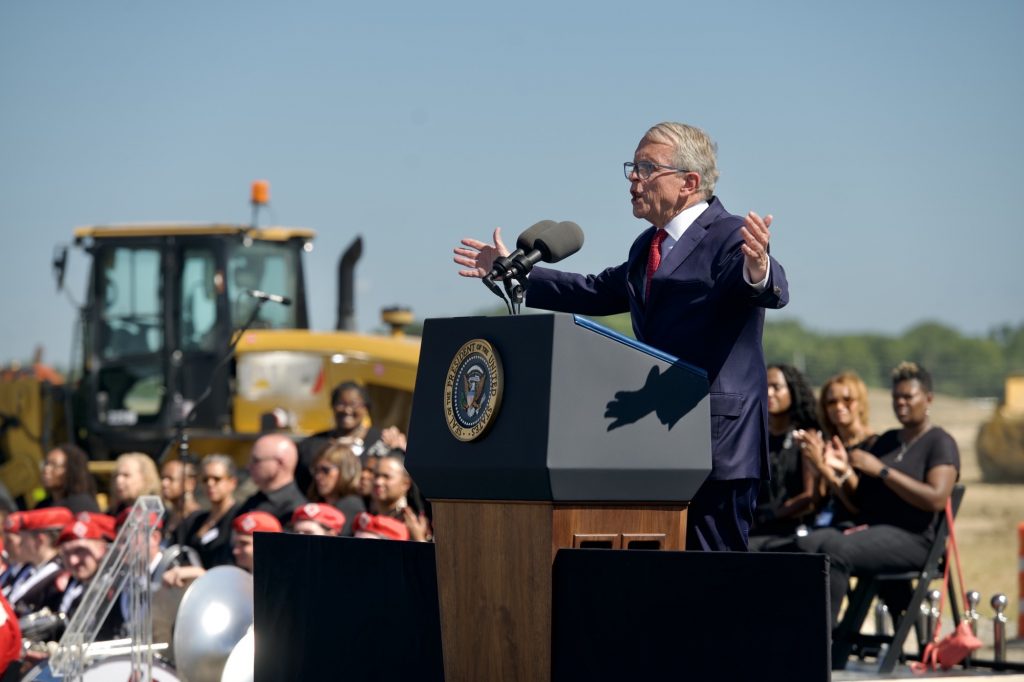
And now, in September, Gov, we’re here breaking ground. And thanks for the passport to get to the state, Gov. Appreciate it.
All in nine months in America.
I want to thank Sherrod Brown for his relentless work, especially making sure that labor is in on this deal. And Pat just mentioned what Sherrod makes clear: It’s time to bury the label “Rust Belt” and call it, as Pat says, the “Silicon Heartland.” That’s what’s happening on these 1,000 acres.
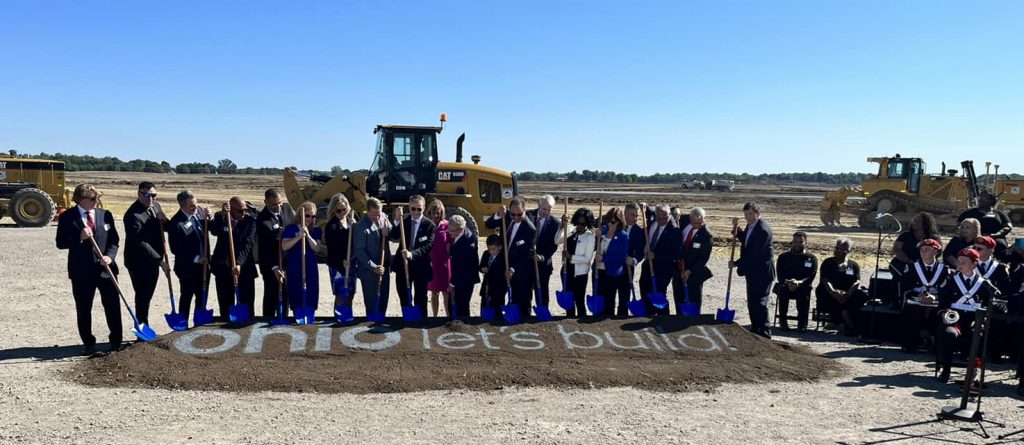
I want to thank Rob Portman for being the gentleman and decent man that he is and for showing that Democrats and Republicans can work together to get big things done for our country. (Applause.) I really mean it. Trying to find where he’s sitting, but he’s a good man. Thank you. You’re leaving a hell of a legacy as you lead. What you’re doing is a consequence of you, in large part.
And thanks to the bipartisan group of Ohio’s congressional delegation here today.
Tim Ryan, thank you for your leadership always representing the interests of working people.
Thank you, Congresswoman Joyce Beatty. And, you know, I don’t think we could’ve gotten the infrastructure bill done without Joyce. She was the final capstone. We all thought it was hanging in the balance there. I don’t know what you did that lasted four hours, but whatever you did, you got it done.
And, Dave Joyce, Anthony Gonzales, Mike Carey, Tony [Troy] Balderson for the work in the House.
We’re also joined by congressional leaders from around the country who fought so hard for this bill. Eddie Bernice Johnson, Chair of the House Science Committee. Eddie, this whole bill would have gotten — wouldn’t have gotten done without you. It really wouldn’t have.
And we’re also joined by Congressman Ro Khanna. Ro is a tireless champion for American innovation and seeing that workers — workers are part of the deal.
While she couldn’t be here, Maria Cantwell also deserves a lot of credit. She’s Chair of the Senate Commerce Committee from the state of Washington. Maria was tireless in getting this bill through the Senate.
And again, Mike, I want to thank you for your work on this project as well.
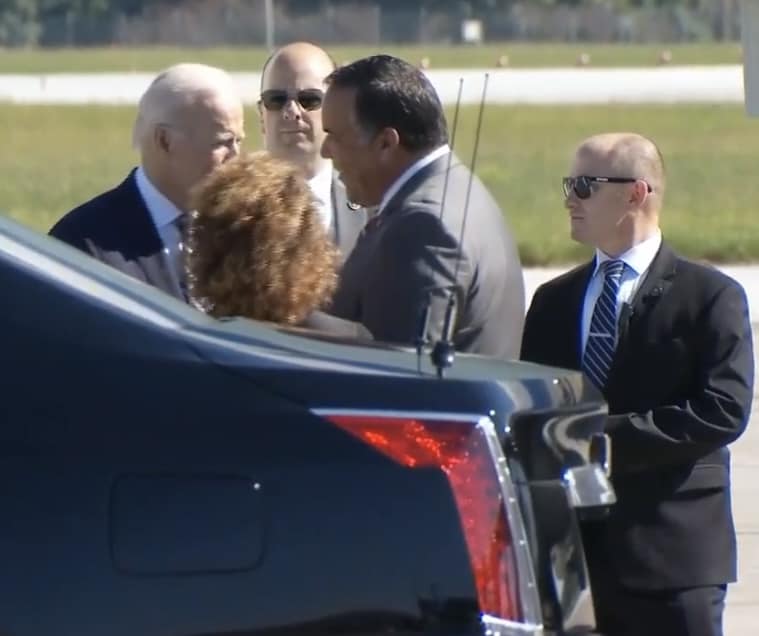
And I especially want to thank the labor leaders here: My deep friend — dear friend Lonnie Stephenson of the IBEW; Tim Burga, the President of the [Ohio] AFL-CIO; Brent Booker, Treasurer of the national building trades; and Mike Kinsley, President of Ohio’s building trades.
You know, it’s fitting to break ground for America’s future here in Ohio. Think about it. There’s kind of a tradition here. The Wright Brothers, Neil Armstrong, John Glenn. They defined America’s spirit — a spirit of daring and innovation.
Pat just laid out Intel’s vision that builds on that legacy. A brand new $20 billion campus; 7,000 construction jobs — union construction jobs; 3,000 fulltime jobs that will pay an average of $135,000 a year, and not all of them require college degrees once these facilities are built.
And here’s a critical piece: Intel is using a project labor agreement for this investment. For the folks at home, these are agreements that contractors, subcontractors, and unions put in place before construction begins. They ensure major projects are handled by well-trained, well-prepared, highly skilled workers. They resolve disputes ahead of time, ensuring safer work sites, avoiding disruptions and work stoppages that can cause expensive delays down the line.
These agreements make sure construction is top-notch and projects are on time, on task, and on budget.
Back in February, I signed an executive order to make sure federal construction projects use these project labor agreements. It’s a big deal that Intel is using one here, and I thank them for that.
And Intel is going to build a workforce of the future right here in Ohio. As you already heard, Intel committed $50 million to partner with community colleges and universities like Ohio State University, including Central State University — the only [public] historically Black university in Ohio — to build a pipeline for students in the semiconductor industry.
The Director of the National Science Foundation is here, Dr. Ponch. He’s here. And NSF and Intel are going to invest $50 million each to support these kinds of partnerships.
Folks at home — at home, you might be wondering why is this such a big deal for manufacturing, something so small in size as a fingerprint, as a — you know, an — a semiconductor.
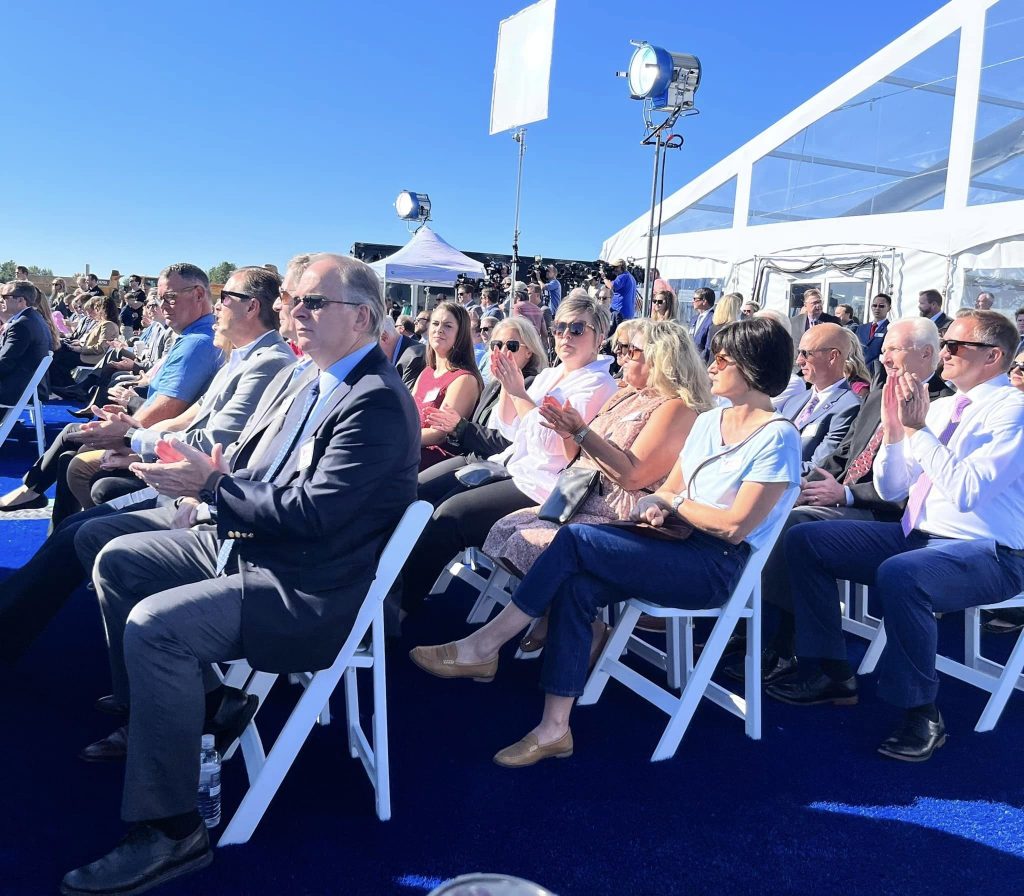
Well, semiconductors are small computers that power everyday lives — smartphones, cars, washing machines, hospital equipment, the Internet, electric grid, and so much more, including our national security.
And here’s the deal: America invented this chip. America invented it. It powered NASA’s Moon mission. Federal investment helped bring down the cost of making these chips, creating a market and an entire industry.
As a result, over 30 years ago, America had more than 30 percent of the global chip production.
Then something happened. America manufacturing, the backbone — the backbone of our economy — got hollowed out. Companies moved jobs overseas, especially from the industrial Midwest. And as a result, today we’re down to producing barely 10 percent of the world’s chips, despite leading in chip research and design.
And as we saw during the pandemic, when factories that make these ships [sic] shut down — chips shut down, the global economy comes to a halt, driving up costs for families and everyone not just here, but around the world.
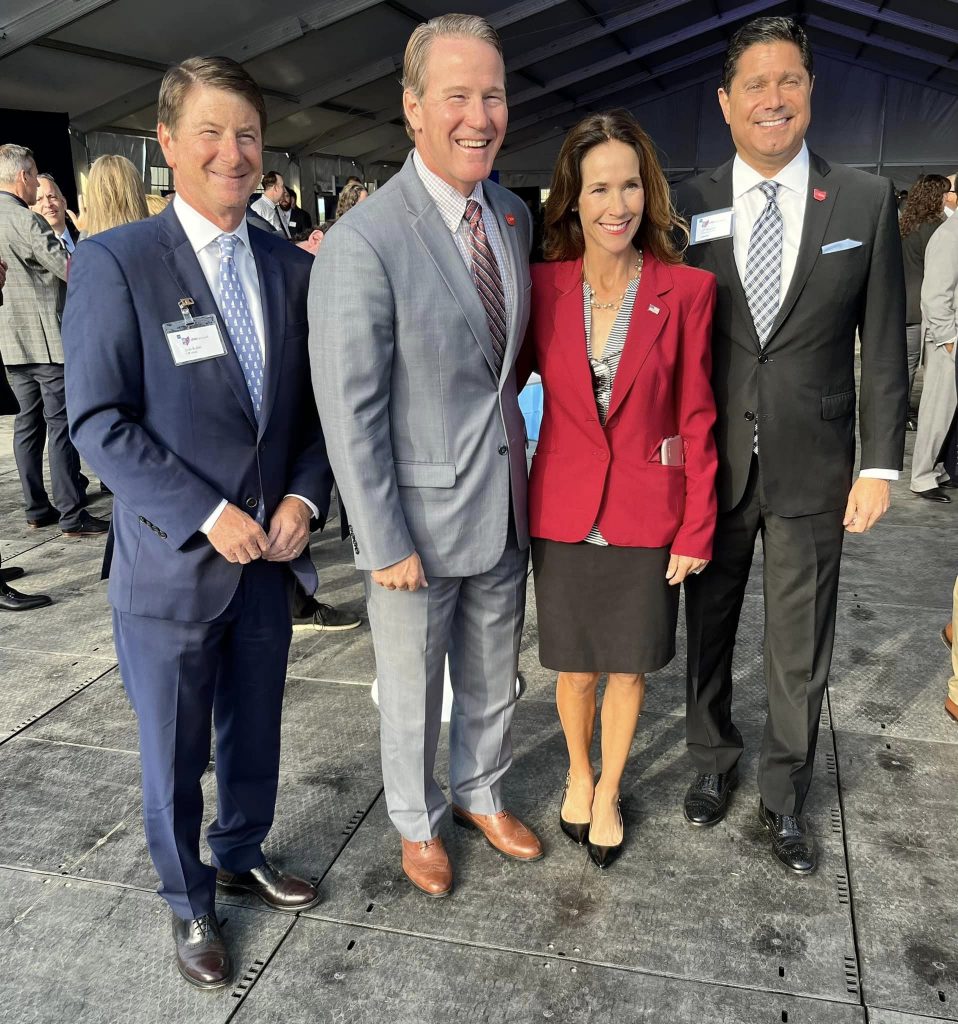
In fact, one third of the core inflation last year was due to higher prices of automobiles because of the shortage of the semiconductors needed to build those automobiles. Folks, we need to make these chips right here in America to bring down everyday costs and create good jobs. (Applause.) Don’t take my word for it. You heard Pat. (Applause.) Listen to the business leaders across this country. They’re making decisions right now about where to invest and produce these chips.
China, Japan, South Korea, European Union — all these places are investing tens of billions of dollars to attract chip manufacturers to their countries. But industry leaders are choosing us, the United States, because they see America is back and America is leading the way.
Folks, since I took office, our economy has created nearly 10 million new jobs, more than 668,000 manufacturing jobs — proof of point that “Made in Ohio” and “Made in America” is no longer just a slogan. It’s happening. It’s a reality today. And it’s just the beginning.
Because I signed into law the CHIPS and Science Act, we’re accelerating the progress. This new law makes historic investments for companies to build advanced manufacturing facilities here in America. Since I signed the CHIPS and Science Act, it’s already started happening.
The American company Micron announced it’s going to invest $40 billion in the next 10 years to build factories, special chips called “memory chips” that store information on your smartphones. That’s going to create 40,000 good-paying jobs and increase the share — America’s share of the memory chip market 500 percent.
Two other companies, GlobalFoundries and Qualcomm, announced a $4 billion partnership to produce chips in America that would otherwise have been made overseas. Qualcomm is one of the world’s largest designers of chips, and planning to boost production by up to 50 percent over the next five years.
Today in North Carolina, Wolfspeed is investing $5 billion to make chip devices for electric vehicles that are going to create 1,800 good-paying jobs over five years.
Folks, the future of the chip industry is going to be made in America. (Applause.) Made in America. Folks at home should know the manufacturing of these semiconductors connects countless small businesses and manufacturers into a supply chain that’s going to thrive all because of this law.
Imagine if we had more of these kinds of factories across the country. This law makes that a reality. It matters. All of this is in our economic interest, and it’s in our national security interest as well.
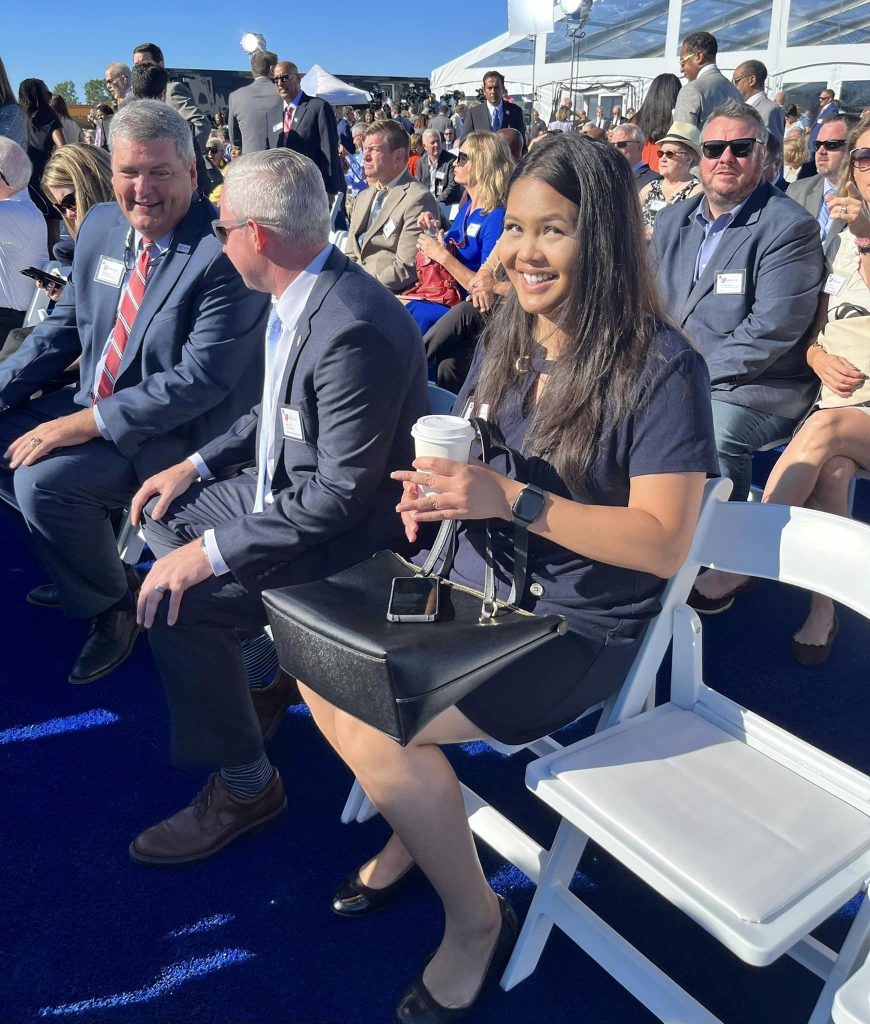
Earlier this year, I went to Lockheed’s factory in Alabama. They’re making the Javelin missile that we’re supplying to Ukraine to defend itself against Putin’s unprovoked war. We need semiconductors not only for those Javelin missiles, but also for the weapons systems of the future that are only going to be more reliant on computer chips. This goes well beyond commercial need.
Unfortunately, we produce zero — zero — of these advanced chips in America. Zero. And China is trying to move way ahead of us in manufacturing them. It’s no wonder — which (inaudible) somewhat unusual — that the Chinese Communist Party actively lobbied U.S. business against this law. Basically, “You want to do business in our country, don’t do it there.”
The United States has to lead the world in producing these advanced chips, and this law makes sure that we will.
And to be clear, the CHIPS and Science Act is not handing out blank checks to companies. I’ve directed my administration to be laser-focused on the guardrails that will protect taxpayers’ dollars. And we’ll make sure that companies partner with unions, community colleges, technical schools to offer training and apprenticeships and to work with small and minority-owned businesses as well.
We’re going to make sure that companies that take taxpayers’ dollars don’t turn around and make investments in China to undermine our supply chain and national security. You know, we have the power — we have the power to take back any federal funding if companies don’t meet these requirements.
The law also requires that companies build these semiconductor facilities by Davis-Bacon prevailing wage so people can live with a little bit of breathing room. (Applause.) And this will ensure tens of thousands of new construction jobs and high-paying jobs and, more often, high-paying union jobs. And will — not only will companies use these funds to buy back — they cannot use these funds for stock buybacks and issue dividends. They have to manufacture.
And finally, the law is about more than chips. It’s about science as well. You know, decades ago, the United States of America invested 2 percent of its gross domestic product — 2 percent — in research and development. We led in everything. We created everything from the Internet to the GP- — to GPS. Today, we invest somewhere between seven tenths but less than 1 percent in research and development.
The United States of America, we used to rank number one in the world in research and development; now we rank number nine. China was number eight a decade [decades] ago; now China is number two. And other countries are closing in fast.
The CHIPS and Science Act moves us up once again. It authorizes funding to boost our research and development investment back closer to 1 percent of our GDP. That’s the fastest single-year growth in 70 years, but it’s still not enough.
We’re going to make sure we lead the world in industries of the future — from quantum computing, to artificial intelligence, to advanced biotechnology. Think of the things and the kinds of investment we deliver vaccines for cancer, cures for HIV, inventing the next be- — best thing that hasn’t even been imagined yet. That’s who America has always been.
It’s something that’s really important: We’re going to make sure that any company that uses federal funding for research and development to invent new technologies will have to make that technology here in America.
And that means we will invest it in America and make it in America. And we’re going to make sure we include all of America.
We’re going to support entrepreneurs and technology hubs all across the country, including historically Black colleges and universities, minority-serving institutions, Tribal colleges. We’re going to — going to tap into the greatest competitive advantage we have: our diverse and talented workforce that’s urban, rural, and suburban.
Folks, I’ve asked Pat and many other leading businessmen — leaders this question: When the United States decides to invest in considerable resources in a new industry that we need to build, does that encourage business to invest as well? And the answer is yes, overwhelmingly. Ask any major businessperson, because they say if we think it’s worth investing in and we’re putting tax dollars into it, it has an increased possibility of being usable and workable.
Federal investments attract private investment. It creates jobs. It creates industries. It demonstrates we’re all in this together.
And I believe there’s another reason why companies are choosing the United States. It’s because we’re better positioned globally than we have been in a long, long time. We’ve seen a faster, stronger economic recovery than any other advanced nation on Earth.
I met with one of the leading companies — research companies in South Korea. I asked why they’re going to invest billions of dollars in the United States. He said, “Because you’re the most secure nation in the world. We know if we invest, it will be secure. And secondly…” — this surprised me — “…you have the best workforce in the world.”
Folks, and we have the best universities in the world, dynamic venture capitalist system, a rule of law that protects intellectual property.
And thanks to the infrastructure law that I signed with the help of many of the members who are here today, that means better roads, bridges, ports, airports, clean water, high-speed Internet for every American. And it’s going to create millions of jobs all by itself. This is a gamechanger.
Let me close with this: This is about our economic security. It’s about our national security. It’s about good-paying, union jobs that you can raise a family on — as my dad would say — and have a little bit of breathing room. Jobs now. Jobs for the future. Jobs in every part of the country. We’re not going to leave a part behind. There’s no need to not develop the whole country. Jobs that show the industrial Midwest is back — the industrial Midwest is back.
And that’s what you’ll see in this field of dreams: PhD engineers and scientists alongside community college graduates, skilled craftsmen — men and women; people of all ages, races, backgrounds with advanced degrees or no degrees, working side by side doing the most sophisticated manufacturing that’s ever done.
Pat was explaining to me what these are going to look like. Correct me if I’m wrong, Pat, but I was — I was impressed. You’re going to dig down 60 feet, 10 football fields long. You’re going to have — make that all cement. You’re going to use that as a basis to build on. Because you need security, you need stability for what you have on top. And you’re going to build up stories beyond — I mean, this is incredible.
Making a tiny computer chip the size of a fingertip.
They’re showing what we’ve always believed — and I want to emphasize this, and then I’ll get out of your hair. And I mean this. You’ve heard me say this for a long time. There is nothing –- I mean this from the bottom of my heart — there is nothing — not a single thing beyond our capacity as a nation if we do it together as the United States of America. And that’s what we’re going to do. This is an inflection point on everything. (Applause.) We’re going to look back on this period 20 years from now and say, “That’s when it began to change.”
God bless you all. And may God protect our troops. Thank you, thank you, thank you. And, Pat, thank you.
Support the New Americans magazine to continue to serve our community with precise news that affect the new American, immigrant and refugee community. https://paypal.com/donate/?hosted_button_id=8LHFS78NRNJJY&source=url


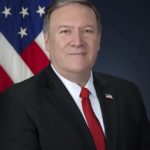
























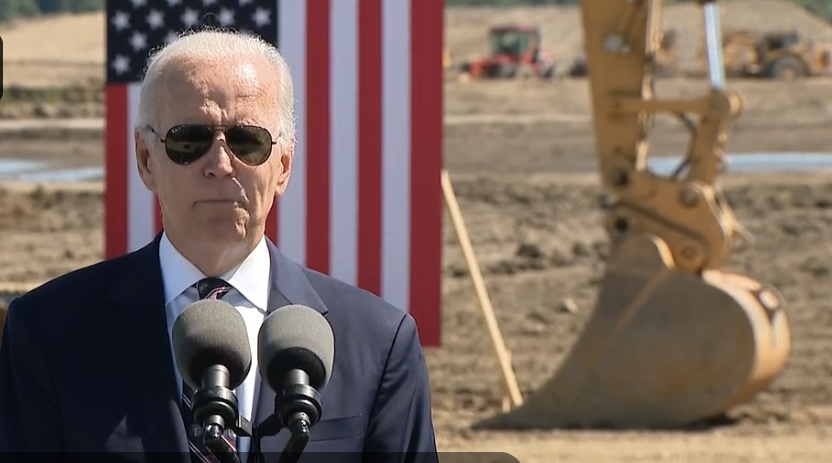


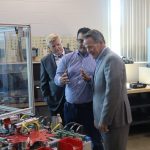


Leave a Reply
You must be logged in to post a comment.